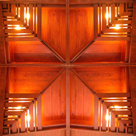 |
|||||||||
|
Beaufort, South Carolina A Gem of Antebellum Architecture |
|||||||||
 A city whose roots date back to 16th century, Beaufort, South Carolina (pronounced "byew-furt", unlike Beaufort, NC, which is pronounced "BO-furt") is known for its Southern hospitality and casual seaside charm. Discovered by the Spanish in 1514, Beaufort enjoyed great prosperity in the 18th century through indigo, rice plantations, and Sea Island Cotton. Today, tabby ruins, historic forts, elegant homes, majestic plantations and Gullah culture and cuisine are reminders of Beaufort’s 500-year history. Horse-drawn carriages make their way slowly through the narrow streets of the National Historic Landmark District. Shrimp boats bring in the day’s catch, galleries, boutiques and cafes line Bay and Port Republic Streets. 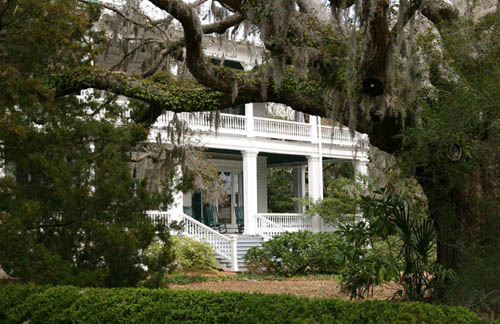 The "Beaufort style" of architecture is a unique one, which incorporates elements of Georgian and Colonial styles, as well as those of Greek Revival and semitropical Spanish. Designed for airiness and coolness, the Beaufort-style homes resemble plantation homes brought to town (as some indeed were), that were adapted to tolerate the summer heat and dampness of the Lowcountry. Homes were raised above ground on piers or arches and given wide overhangs and porches. 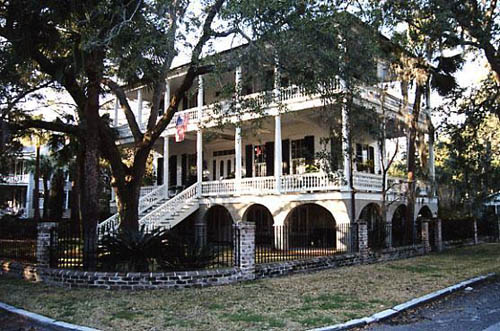 Beaufort’s early settlers built timber-framed houses, harvesting pine, oak and cypress from Port Royal and neighboring islands. They also collected oyster shells, and mixed them with sand, lime and water to produce a durable, cement-like material called tabby. Now recognized as one of Beaufort’s most distinctive features, tabby was an inexpensive and adaptable medium for churches, houses, outbuildings and stores. 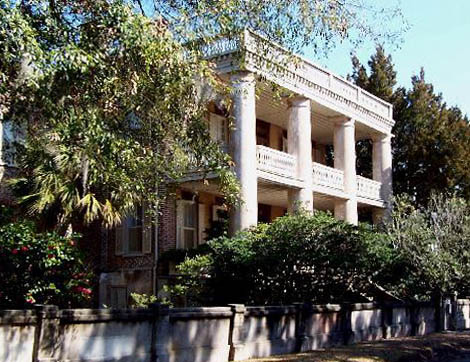 Beaufort’s distinguished legacy of historic buildings encourages visitors to drift back in time and enjoy this small town overlooking a glittering bay framed by moss-draped oaks. 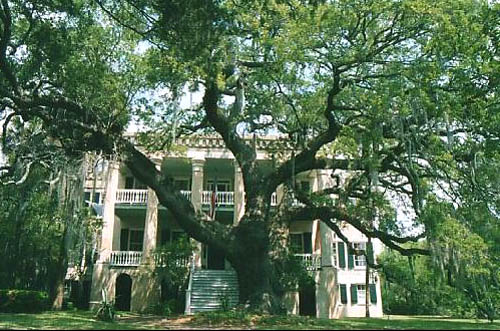 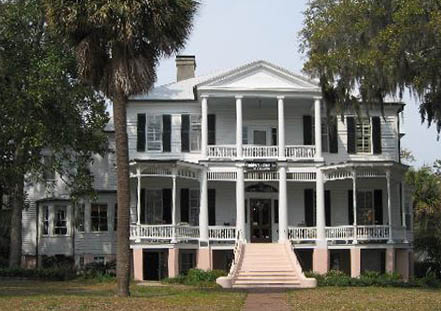 Before we start our tour of historic Beaufort, we'll enjoy a Gullah feast, served by Rowland Washington, a favorite local chef. After lunch, our tour guide for Beaufort will be Jon Sharp, an enthusiastic story-teller with a treasure trove of knowledge about this historic town. Old Sheldon Church
Between Auldbrass and Beaufort we'll visit an
amazing ruin, the Old Sheldon Church (below).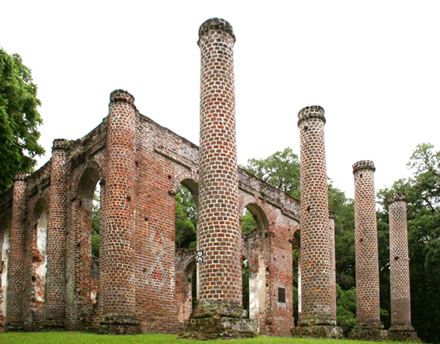 First
known as the Prince Williams Parish Church, Old Sheldon Church was
built between 1745 and 1755. The name Sheldon was used to honor the
Bull Family who had a plantation nearby and whose ancestral home in
England was called Sheldon Hall. Arms and ammunition were hidden in the
Bull family vault during the American Revolution, and Continental
troops drilled on the church grounds. Sheldon Church was burned by
General Augustine Prevost's British troops in May 1779. The church was
rebuilt in 1826 and was given the name of Sheldon Church of Prince
William's Parish. During the Civil War, General Sherman's troops burned
Sheldon Church as part of his infamous "March to the Sea, and the
church was never rebuilt.
|
|||||||||
|
|||||||||
|
|
|||||||||
| < | |||||||||
